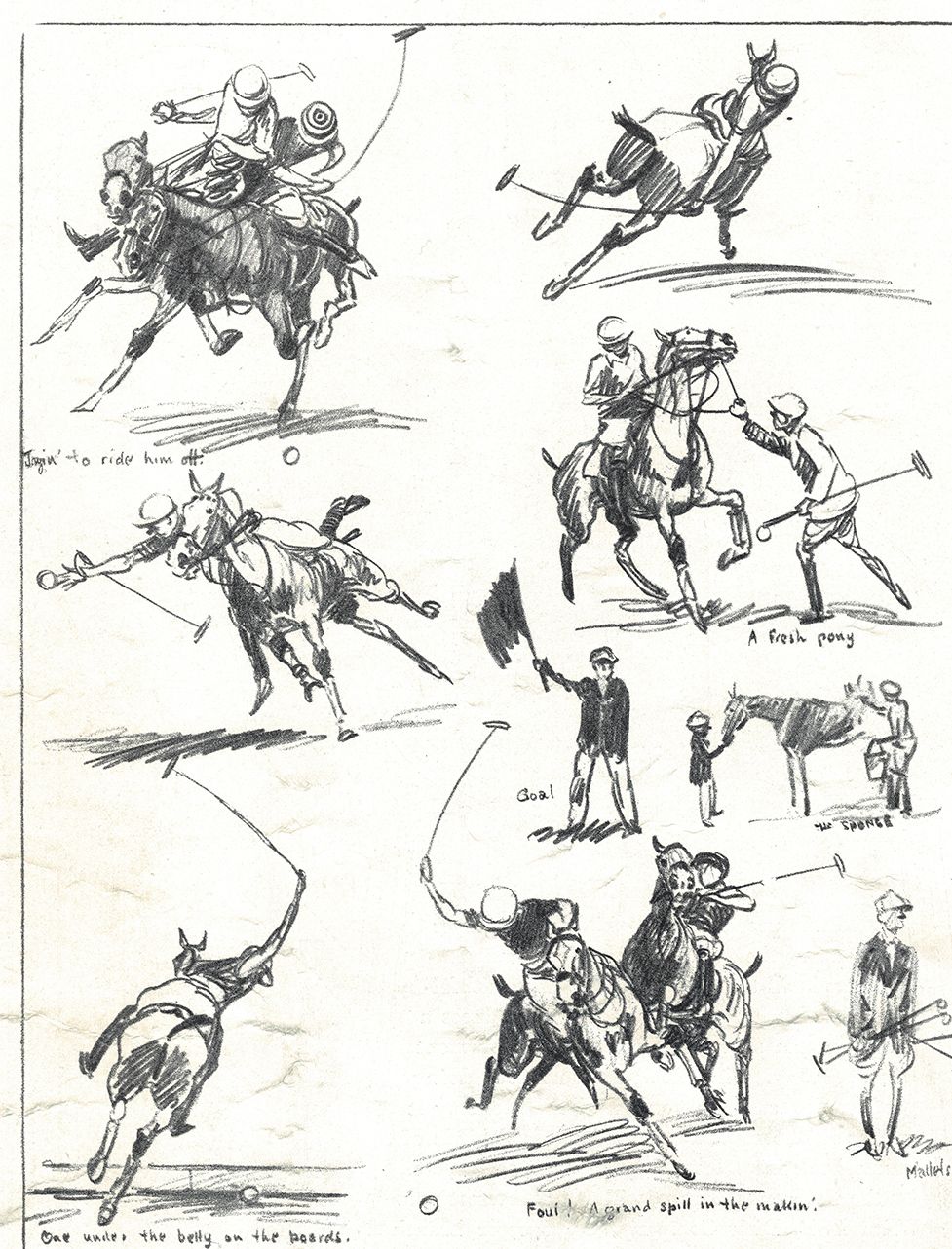Lake Forest Hosts the World Series - Of Polo
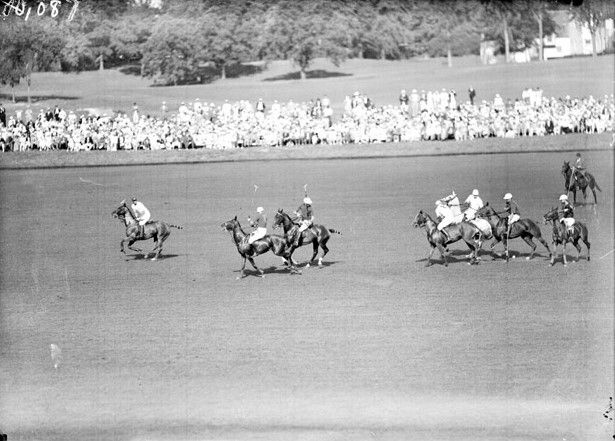
Lake Forest resident Frederic McLaughlin, a significant polo talent in the early 1900s, persuaded the U. S. Polo Association to bring the matches to the Chicago area as a capstone to the 1933 Century of Progress Exposition.
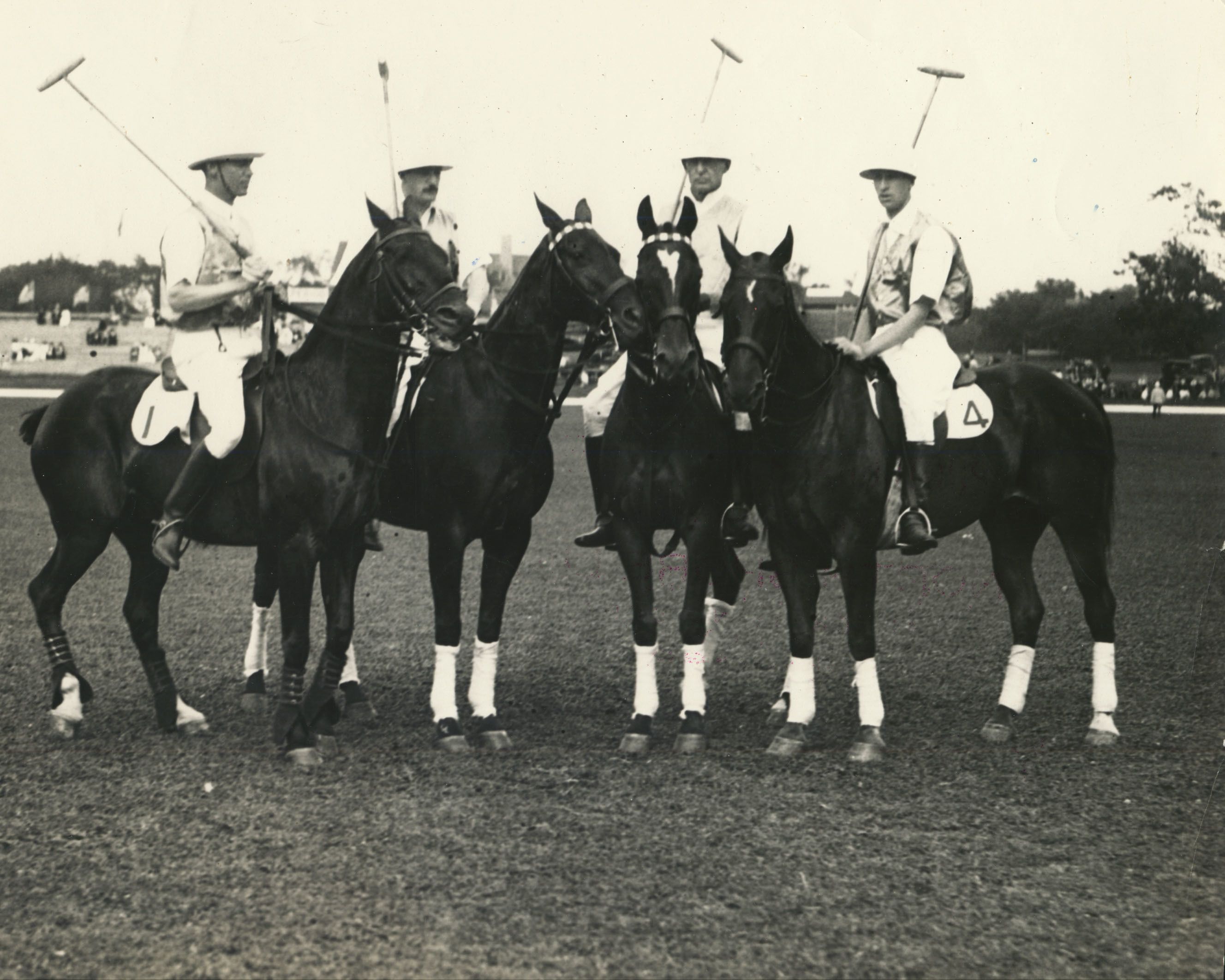
The Onwentsia Club provided both storied and neutral territory for the event. Though fully 20 years behind the early eastern clubs, Onwentsia had launched the first country club polo team in the Midwest in 1896. Chicago was also conveniently situated between the stomping grounds of the nation’s best polo players on the eastern seaboard, the Pacific coast, and the ranches of Texas.
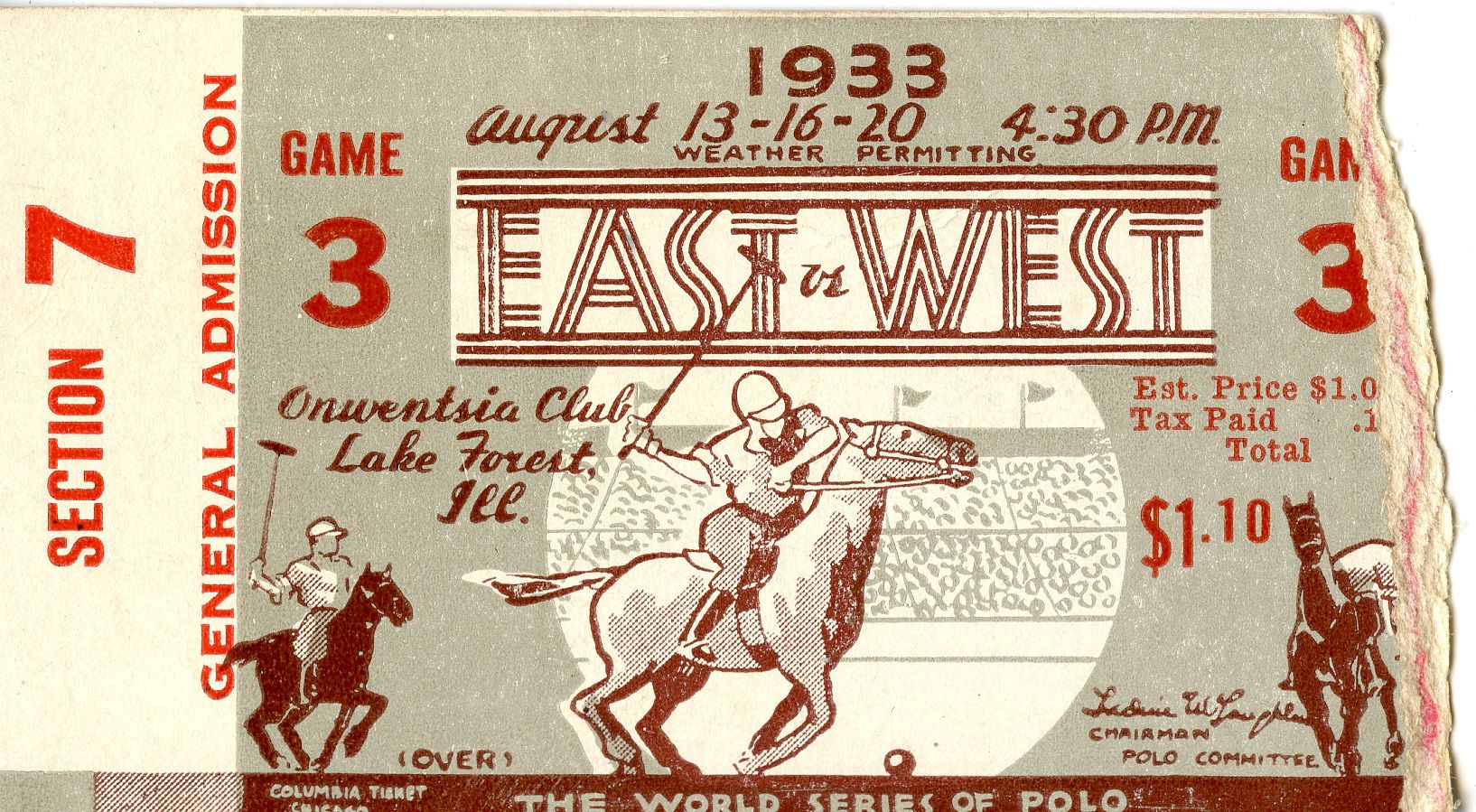
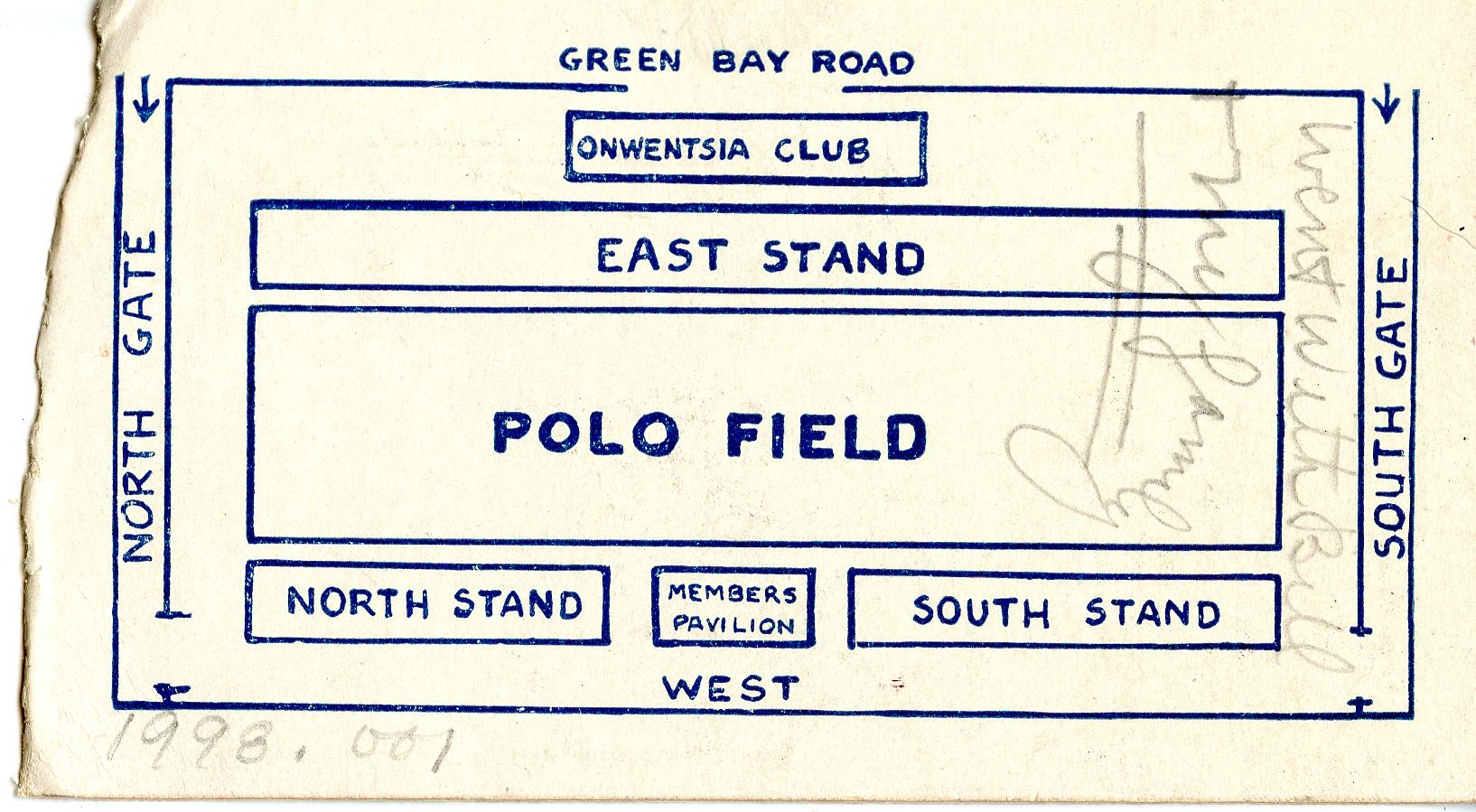
To prepare for the series, the Onwentsia Club erected boxes and temporary grandstands large enough to fit 15,000 (and 5,000 additional seats were added for Game 3). The field was combed and manicured. Space nearby was cleared for parking up to 8,000 motor vehicles and special trains were scheduled to transport spectators up from the city. Onwentsia prepared its cottages and the Deerpath Inn readied its lodgings to accommodate the players and their families. Blocks of rooms were reserved at Chicago’s finest hotels for the eastern attendees – which had to be rebooked when the series extended to three games. Strings of ponies arrived from the east and west by railcar. Warm-up matches were held between the westerners and the Fort Sheridan team. Advance ticket sales for the first game were capped at around 10,000, with 5,000 more available at the gates.
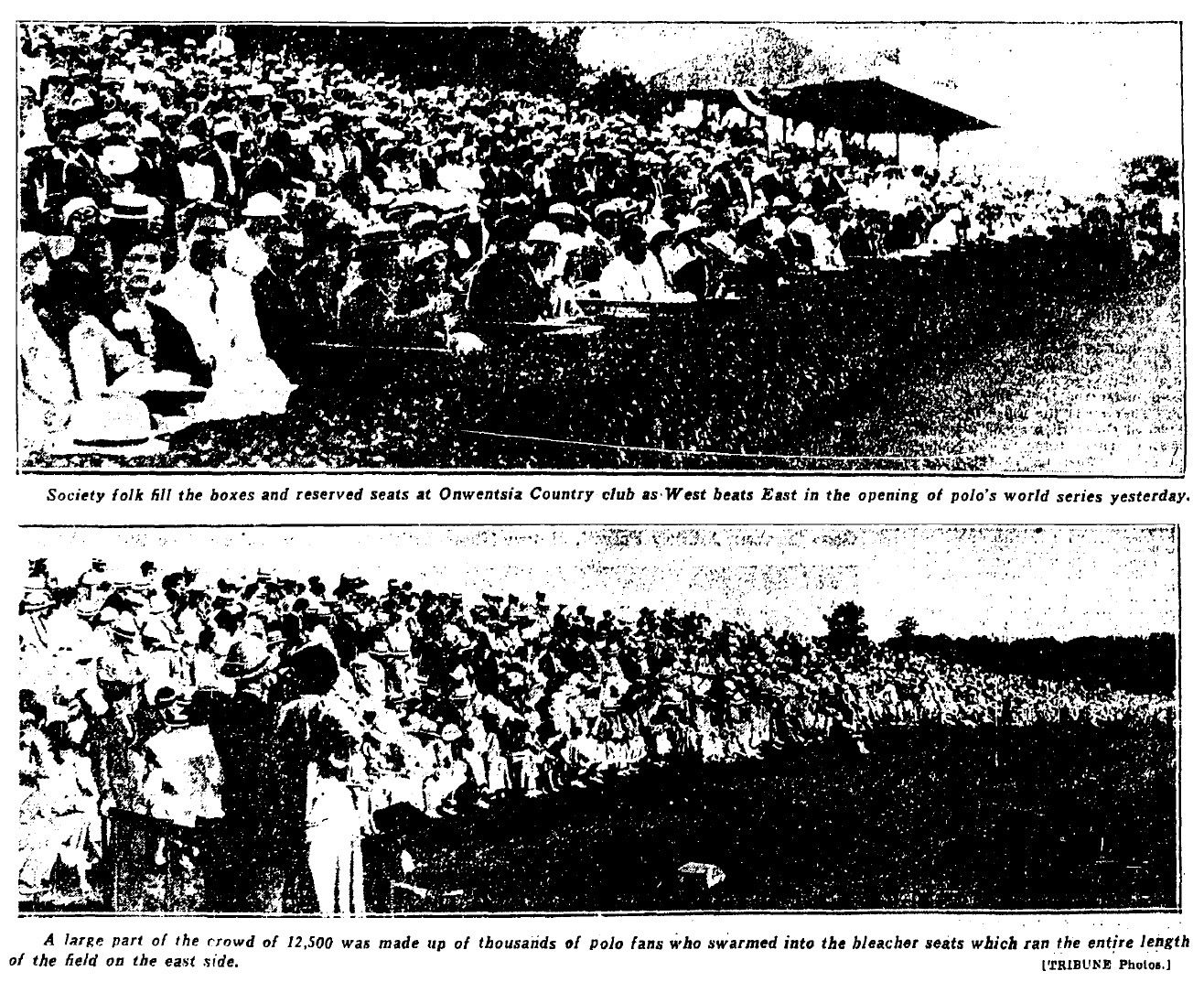
Conventional wisdom held that the East, with its long traditions and roster of polo bluebloods, remained superior, though the upstart West was closing the gap. But the West proved victorious, in a thrilling 2-1 series that many dubbed the best matchup U.S. polo had ever witnessed.
Game 1, Sunday, August 13, 1933 – West 15, East 11
Game 2, Wednesday, August 16, 1933 – East 12, West 8
Game 3, Sunday, August 20, 1933 – West 12, East 6
The first game was the biggest shocker. “Four rough riding westerners yesterday dealt a telling blow at the long cherished prestige of eastern polo,” the Chicago Daily Tribune crowed on August 14. After an Eastern win in Game 2, the West took the final game 12 to 6, clinching the series victory before a crowd of over 17,500.
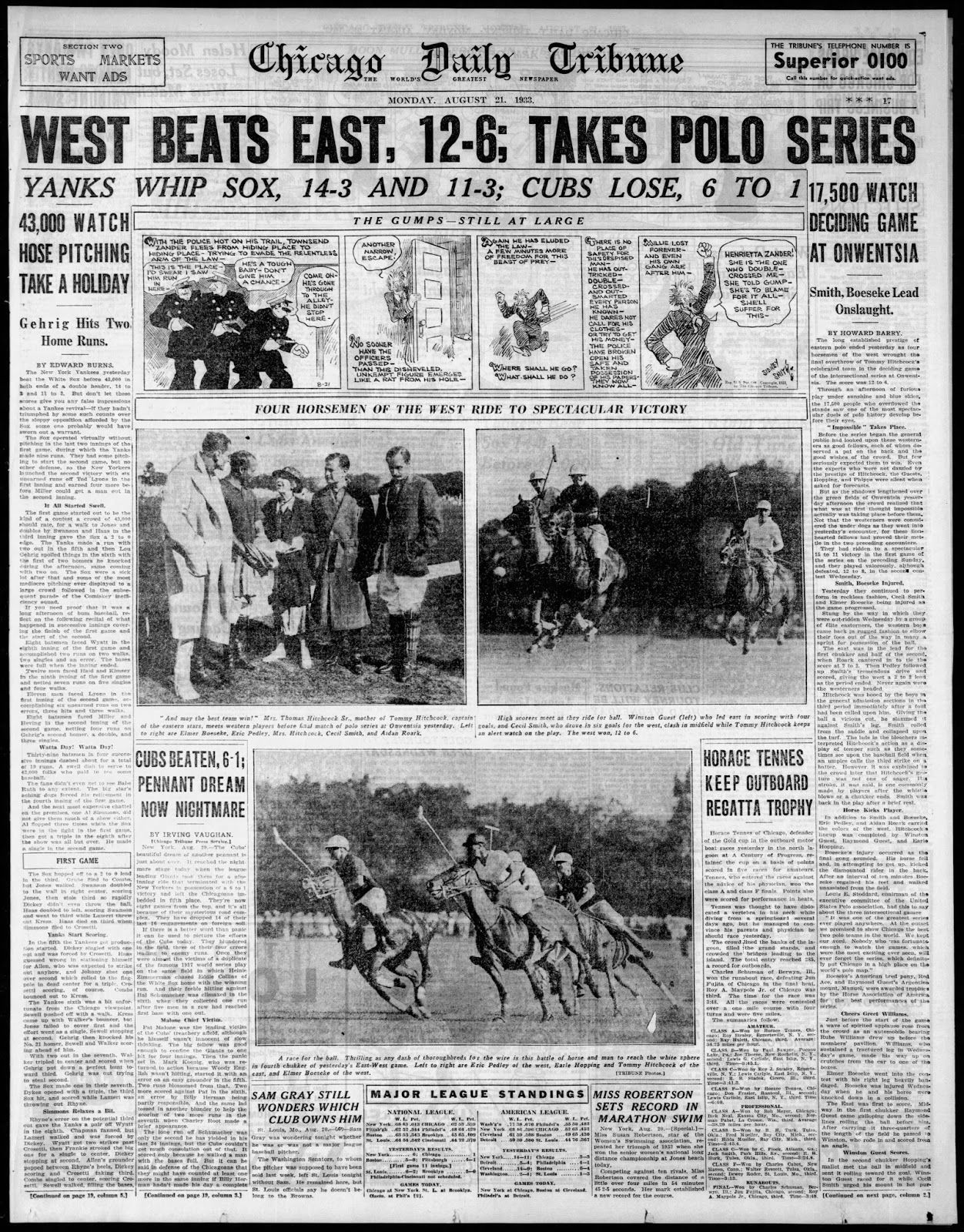
Throughout the series, play was fiercely competitive and physical, though a high level of skill was maintained as well. The first game took over three hours, because the West’s star player, Cecil Smith, was knocked out for nearly 30 minutes. He revived as soon as the ambulance arrived on the pitch and refused its services, stubbornly insisting on completing the match. The other games were similarly marked by knockdowns, countless bruises, and even broken bones.
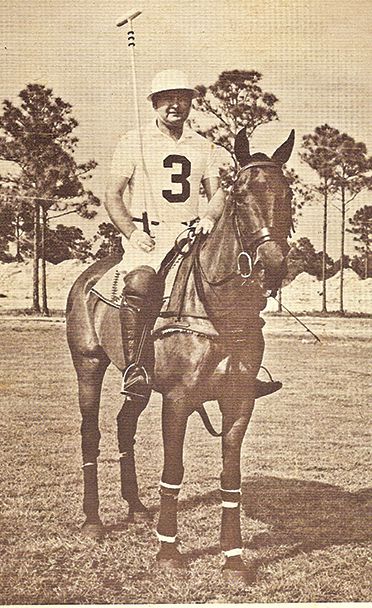
Despite all the injuries, the West’s Rube Williams was the only player who missed any time after he fractured his leg during Game 2, an East victory. He was treated and fitted for a cast at Alice Home Hospital. With Williams out for the decisive third game, the West flew in Eric Pedley from Pasadena, California. Pedley was a star player who had missed the first two matches with a business conflict.
